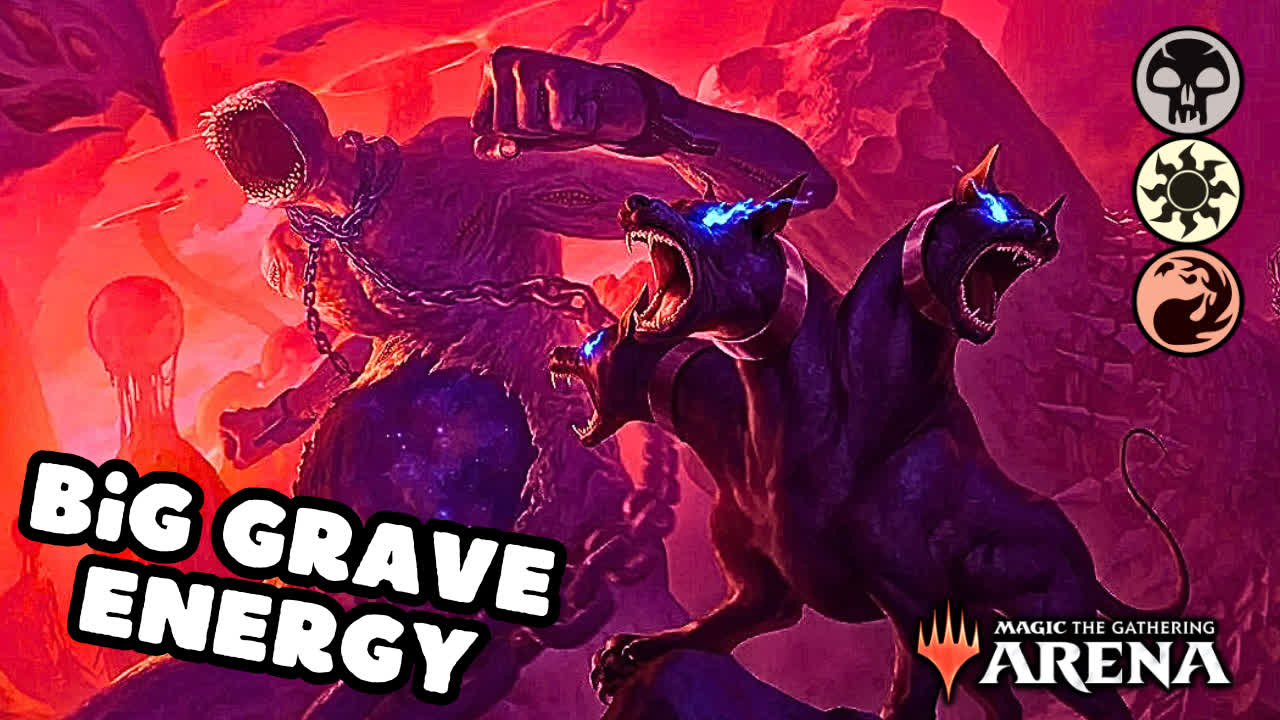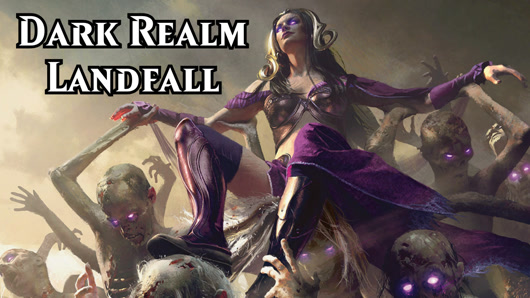A card from March of the Machine that has always read like my favorite kind of nonsense is Kroxa and Kunoros. The combination of Cerberus with the serial numbers filed off and a generic hunger titan lends itself to very silly reanimator combinations that can put a ton of power on the board very quickly if you can fill your graveyard quickly. Cards like Breach the Multiverse can do this very well, but for today's deck, I decided to look into other mass graveyard filling options that just work well together.
The Main Buildaround
Kroxa and Kunoros requires a bit of setup, but fortunately they trigger on entering as well as attacking. If you can stick this unit, your opponent will need to respect it or be utterly beaten down because of the stats, but the real power in this card is the fact that it rarely ever enters alone unless your opponent has found a way to hose your graveyard.
Given that our deck is capable of reanimating large creatures, we absolutely included the big daddy himself, Valgavoth, Terror Eater. This card has proven time and again to be one of the best reanimation targets in Standard due to its ability to overpower the board and protect itself. The fact that it's a flying lifelinker that denies death triggers and lets you steal cards makes it honestly the best reanimation target in the game. Our goal with the deck is to play Kroxa and Kunoros, or reanimate them with a Zombify, and use their trigger to pull up Valgavoth. Even if the opponent has removal for one, they probably won't be able to hit both. Of course, we have two Atraxa, Grand Unifiers in here as well because of her ability to refill our hand.
Filling the Graveyard
Overlord of the Balemurk is quickly becoming my favorite card in Standard with its powering up a number of my favorite strategies. The ability to drop it for two mana and replace it in hand is massive, plus the payoff of a five-mana 5/5 that fills the yard and draws a card on entry is nothing to sneeze at. If you get one trigger off of this plus any other card that puts material in the graveyard, you can capitalize on a Kroxa and Kunoros trigger. This card is also crazy good with some of our creatures that also help tee up our engine like…
Fear of Missing Out gives us a lot of utility in any deck that wants to fill the graveyard. If our reanimation targets are stranded in hand, it lets us dump them, but it also is a threat to give our big monsters multiple attacks if our opponent doesn't address it. Usually, it gets a key element in our yard while pulling a piece of removal from our opponent's hand. That's an absolute win for this card and a job well done. If they don't answer it, well, we have stats online to work with in combat, so that's fine too.
Given that we need a critical mass of material in our graveyard, we have multiple cards that can discard to draw. Bitter Reunion is good and can be preferable to FOMO because it draws two cards instead of one, doesn't require discard if it's countered on the stack, and can grant haste to our giant friends who arrive late. The haste is especially great when combined with a full-priced Overlord of the Balemurk because it adds ten cards to our graveyard and pulls up to two of them back to our hand. If you don't get what you need with that setup, don't buy any lotto tickets.
Brass's Tunnel-Grinder is an odd card that doesn't see a lot of play these days just because it doesn't remove a threat or add stats to the board. In today's Standard, it's awfully slow, but the amount of cards it puts in our graveyard is awesome, and given how explosive our payoff is after we've set that up, we can get away with it in this deck. In grindier matchups, it also provides a target for our opponent's disenchant-style removal that isn't as relevant as our overlords or FOMOs.
Our Interaction Suite
Exorcise being sorcery speed is a huge knock against it, but it's capable of hitting a ton of incredible targets in the format, including most pieces of graveyard hate that this deck will struggle against (Rest in Peace, Leyline of the Void, Ghost Vacuum). Its utility against creatures isn't amazing except for enchantment creatures like Enduring Curiosity, but sometimes picking off an Archfiend of the Dross can set the Dimir Demons players back pretty far.
This card has become a mainstay in pretty much every one of my decks containing red. An instant-speed answer to Deep-Cavern Bat, Heartfire Hero, or Mosswood Dreadknight goes a long way right now, and its ability to take advantage of enchantments we have lying around to take out bigger threats like Glissa Sunslayer or Enduring Curiosity can't be overstated.
Nowhere to Run works nicely alongside Torch the Tower since it leaves bargain fodder back, but the primary reason it's in here is how cleanly it addresses most creatures that have a Sheltered by Ghosts on them. I've found that card is incredibly prevalent on the MTG Arena ladder in platinum and diamond ranks, so having a main-deck plan for it is a great idea.
Split Up overperforms in nearly every deck it's in. I am running it as a one-of here for emergency situations, but I'm seriously considering bumping it up to a two-of. The ability to pick off part of the opponent's board means its worst-case scenario is a Hero's Downfall, and if there are truly no creatures on board, we can always churn it away to one of our discard engines to keep digging through our deck.
Conclusion
Like most reanimator decks I've seen recently, this deck is hot and cold. The presence of so much graveyard hate in Standard is definitely a problem, but if your opponent doesn't stick their Scavenging Ooze or Rest in Peace, it can be a ton of fun. The amount of low-to-the-ground removal gives it the chance to control the game long enough to get into the late game where our stuff can pop off and get huge. Frankly, it's just the kind of Johnny/Timmy fun I like to have in this format.
Thank you for reading, and happy brewing!
Check out video content recorded with CardFlow

















